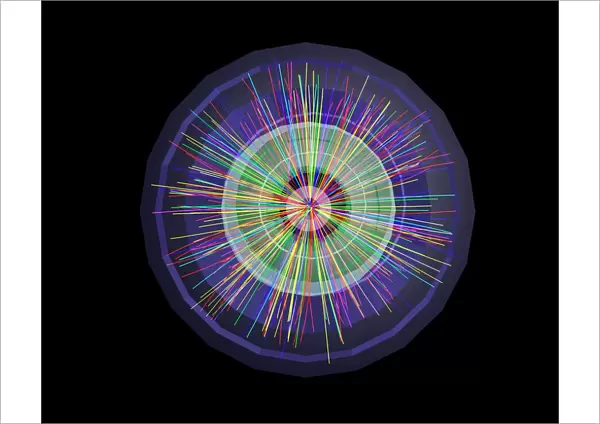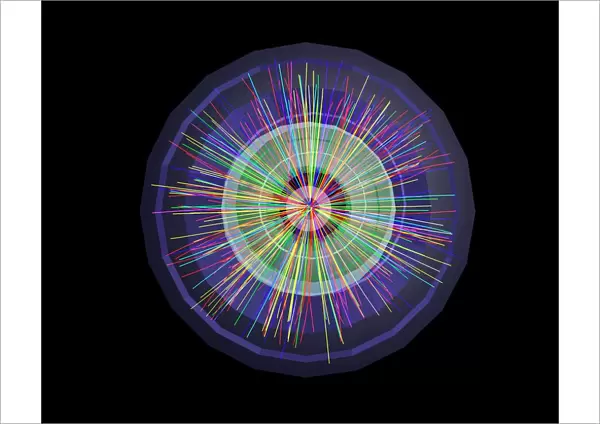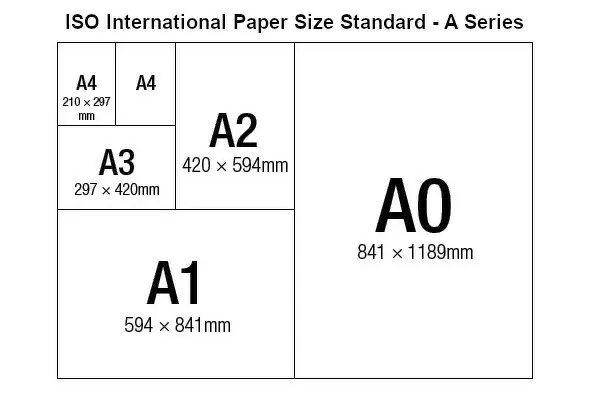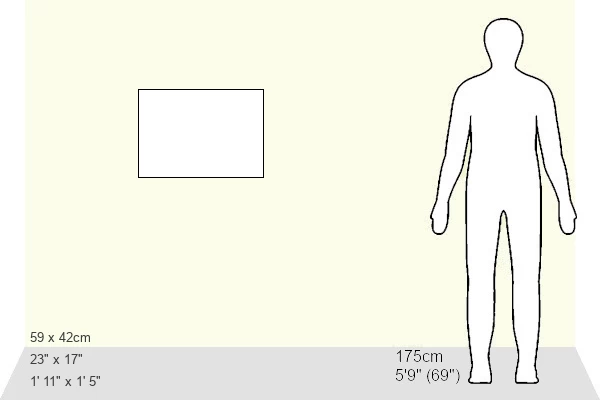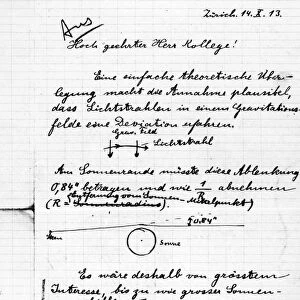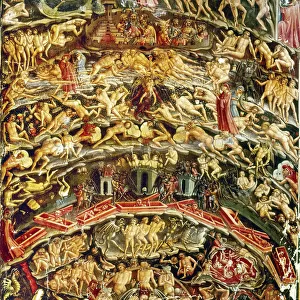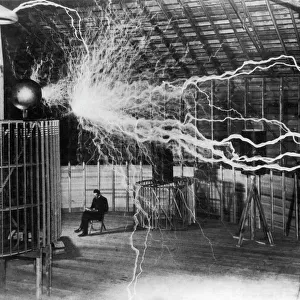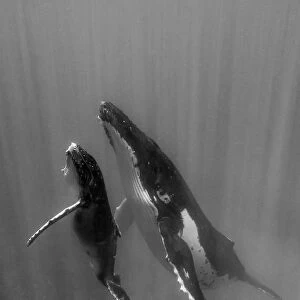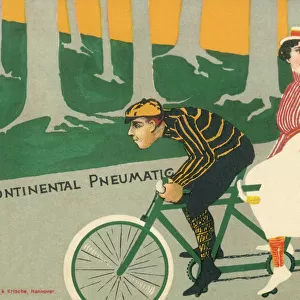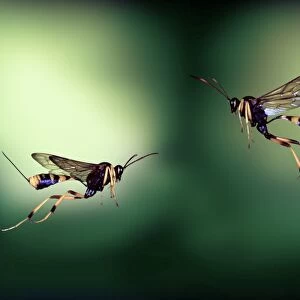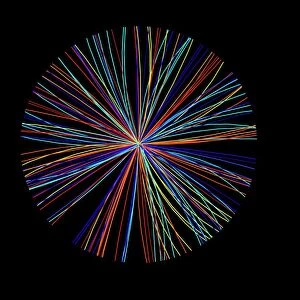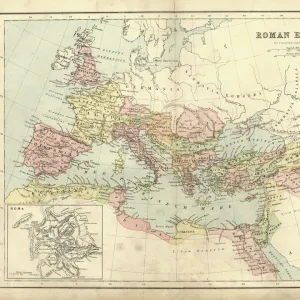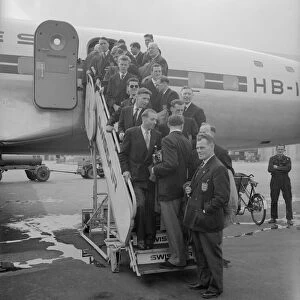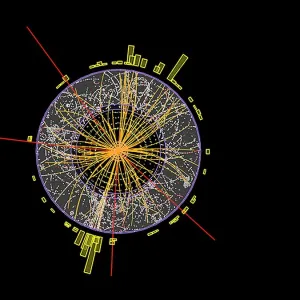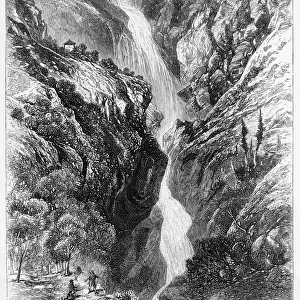Fine Art Print > Europe > Switzerland > Geneva
Fine Art Print : Lead ion collisions
![]()

Fine Art Prints from Science Photo Library
Lead ion collisions
Lead ion collisions. Particle tracks from the first lead ion collisions seen by the ALICE (a large ion collider experiment) detector at CERN (the European particle physics laboratory) near Geneva, Switzerland, on 7th November 2010. Each collision, produced after the ions had been accelerated to an energy of 287 TeV (tera electron volts) by the large hadron collider (LHC), leads to the production of thousands of subatomic particles. The tracks are colour-coded according to energy from low (blue) to high (red). Lead ion collisions are expected to produce quark-gluon plasma, a primordial state of matter thought to have been present in the Universe microseconds after the Big Bang. Shaded areas are elements of the detector
Science Photo Library features Science and Medical images including photos and illustrations
Media ID 4244419
© CERN/SCIENCE PHOTO LIBRARY
Cern Collision Collisions Cosmological Cosmology Decay Products European Particle Physics Laboratory Experiment Fundamental Particles Geneva High Energy Ions Large Hadron Collider Matter Particle Accelerator Particle Detector Particle Physics Particle Track Structure Of Matter Subatomic Particles Switzerland Trace Traces Tracks Trajectories Trajectory Alice Physical
A2 (42x59cm) Fine Art Print
Experience the mesmerizing world of subatomic physics with our Fine Art Prints from Media Storehouse, featuring this stunning image of lead ion collisions by Science Photo Library. Witness the beauty and complexity of particle tracks from the first lead ion collisions captured by the ALICE detector at CERN. This captivating print is not just a scientific marvel, but also a work of art that adds depth and intrigue to any space. Let the mysteries of the universe unfold before your eyes and ignite your imagination.
Our Fine Art Prints are printed on 100% acid free, PH neutral paper with archival properties. This printing method is used by museums and art collections to exhibit photographs and art reproductions. Hahnemühle certified studio for digital fine art printing. Printed on 308gsm Photo Rag Paper.
Our fine art prints are high-quality prints made using a paper called Photo Rag. This 100% cotton rag fibre paper is known for its exceptional image sharpness, rich colors, and high level of detail, making it a popular choice for professional photographers and artists. Photo rag paper is our clear recommendation for a fine art paper print. If you can afford to spend more on a higher quality paper, then Photo Rag is our clear recommendation for a fine art paper print.
Estimated Image Size (if not cropped) is 51.2cm x 42cm (20.2" x 16.5")
Estimated Product Size is 59.4cm x 42cm (23.4" x 16.5")
These are individually made so all sizes are approximate
Artwork printed orientated as per the preview above, with landscape (horizontal) orientation to match the source image.
FEATURES IN THESE COLLECTIONS
> Europe
> Related Images
> Europe
> Switzerland
> Geneva
> Europe
> Switzerland
> Posters
> Europe
> Switzerland
> Related Images
> Science Photo Library
> Physics
> Science Photo Library
> Specialist Imaging
EDITORS COMMENTS
In this image, we witness the first lead ion collisions ever recorded by the ALICE experiment at CERN, the European Organization for Nuclear Research, located near Geneva, Switzerland. On November 7, 2010, these ions, each carrying the mass of approximately 208 lead nuclei, were accelerated to an astounding energy of 287 TeV (tera electron volts) by the Large Hadron Collider (LHC). The resulting collisions produced a cascade of thousands of subatomic particles, which are vividly depicted in this photograph. The particle tracks are color-coded according to their energy, with low-energy particles appearing in blue and high-energy particles in red. Lead ion collisions are anticipated to generate quark-gluon plasma, a primordial state of matter believed to have existed in the universe mere microseconds after the Big Bang. The shaded areas in the image represent various elements of the intricate ALICE detector. Quark-gluon plasma is a fascinating and crucial aspect of modern physics, as it is a unique state of matter in which quarks and gluons exist in their deconfined form. This discovery could potentially shed new light on the fundamental structure of matter and the evolution of the universe. The ALICE experiment, an inner tracking system designed specifically for heavy ion collisions, plays a pivotal role in the exploration of this intriguing phenomenon. The Large Hadron Collider, a marvel of 21st-century technology, has revolutionized our understanding of particle physics by providing scientists with the ability to study the behavior of subatomic particles at unprecedented energies. This image serves as a testament to the groundbreaking research being conducted at CERN and the ongoing quest to unravel the mysteries of the universe.
MADE IN THE UK
Safe Shipping with 30 Day Money Back Guarantee
FREE PERSONALISATION*
We are proud to offer a range of customisation features including Personalised Captions, Color Filters and Picture Zoom Tools
SECURE PAYMENTS
We happily accept a wide range of payment options so you can pay for the things you need in the way that is most convenient for you
* Options may vary by product and licensing agreement. Zoomed Pictures can be adjusted in the Basket.

